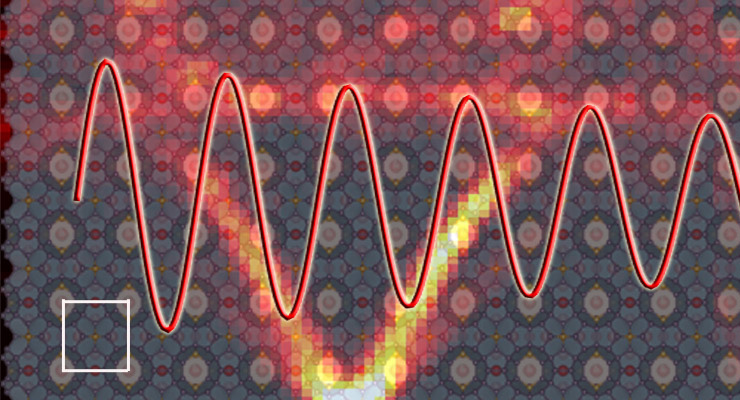Understanding how the heat propagates in a material is a key issue in many different fields. For application such as nano and micro technology, heat dissipation is a key element. For thermoelectric materials, which can transform heat into electricity, researchers design new materials and try to reduce as much as possible their thermal conductivity, a key parameter in the efficiency equation in these materials. However an understanding of the detailed mechanism of heat propagation in complex systems is still lacking. The heat is carried out by quasiparticles named phonons, related to atomic vibration , which travel in the material with the speed of sound. While travelling in a material, a phonon collides with defects or with other phonons, as billiard boules would do, reducing in turn the thermal conductivity. The more collisions there are, the smaller is the thermal conductivity. This is measured by the mean distance a phonon travels without collision (phonon mean free path) or through the mean time between two phonon collisions (phonon lifetime - the phonon mean free path is the product of the phonon lifetime by the phonon velocity).
A multi-partner study within the European
C-MAC network has measured experimentally, for the first time, the phonon lifetime in a thermoelectric material clathrate renown for its very low ‘glass-like’ thermal conductivity, i.e., where phonons are expected experiencing a large amount of random collisions. This material contains Ge, Ba and Au atoms arranged periodically with a unit cell containing 54 atoms. The Ge and Au network form cages that enclose the Ba atoms. The team found surprisingly long mean-free-paths ranging from tens to hundreds of nanometers (1 nm=10-9 m). This is much larger than the short phonon mean free path of the order 0.5 nm that is commonly associated with such glass-like thermal conductivity. The study also demonstrates a large reduction of the number of phonon effectively carrying heat. Those results challenge current theoretical calculation and open the way for a new understanding of heat transport in complex materials.
The background illustrates the periodic structure of the clathrate, with a unit cell (shown as a white square in the left with a parameter 1 nm.
The Ba atoms in red are enclosed in the cages. The coloured curved are the inelastic neutron scattering measurements from which the
dispersion reaction and the phonon lifetime has been extracted. The decaying sinusoidal curve, illustrate the phonon propagation and its time
decay (or lifetime) for a phonon wavelength equal to 2 nm.
Direct measurement of individual phonon lifetimes in the clathrate compound Ba7.81Ge40.67Au5.33,
P.-F. Lory, S. Pailhès et al., Nature Communications, 8: 491, 2017, DOI: 10.1038/s41467-017-00584-7
https://www.nature.com/articles/s41467-017-00584-7
Surprenante contradiction entre faible conductivité thermique des cristaux et longs temps de vie des phonons

